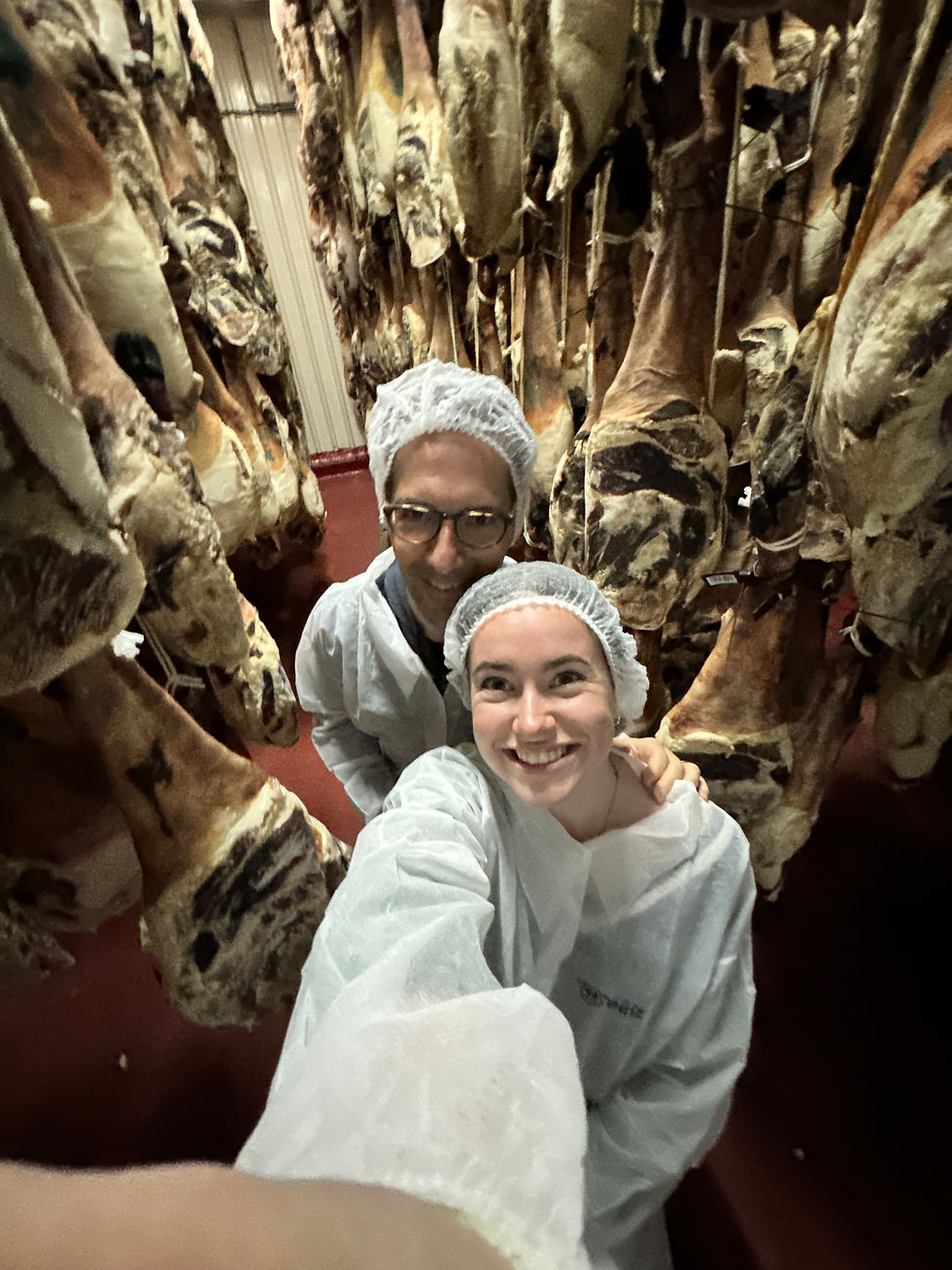Jamón Ibérico: Farm Tour
- oliviampollack
- Apr 19
- 2 min read
When my family visited me in Spain over Easter, we spent a few days traveling around the south, and one of the stops that stood out was a jamón ibérico farm just outside Sevilla. I had eaten plenty of jamón while living in Barcelona—usually sliced thin with some bread or as part of a tapas spread—but I didn’t know much about how it was actually made.
At the farm, we got to see the pigs and learn about the different types of jamón. There’s a whole system based on the breed of the pig and what they’re fed. The highest quality comes from pigs that are fed acorns—de bellota—and raised to roam freely. The acorns make a big difference in the flavor and texture of the meat. We also walked through the drying rooms where the legs are hung and cured, and at the end we did a tasting.

The tasting was probably the most interesting part. We tried different types side by side, and you could really notice the difference in quality. The bellota jamón was smooth, rich, and incredibly tender. Being at the farm made the whole process feel more connected—what I had been eating in cafes and bars actually had this long, detailed background behind it.

We were in Sevilla during Semana Santa, which made the visit feel even more tied to tradition. The city was packed with people, and in between watching the processions and walking around, we noticed how much jamón showed up on every table—at restaurants, in market stalls, even packed into sandwiches for people standing on the street. It felt like everyone was eating it. Being there at that time made it clear how much food, especially something like jamón ibérico, is part of how people celebrate and gather.

Jamón ibérico is everywhere in Spain. You see it in markets, hanging in restaurants, and in people’s homes. Slicing it properly is a whole technique, and it’s something that’s almost always shared—at meals, during holidays, or just casually with wine and bread. Visiting the farm helped me understand why people care about it so much, and why it’s treated with so much attention and pride.




Comments